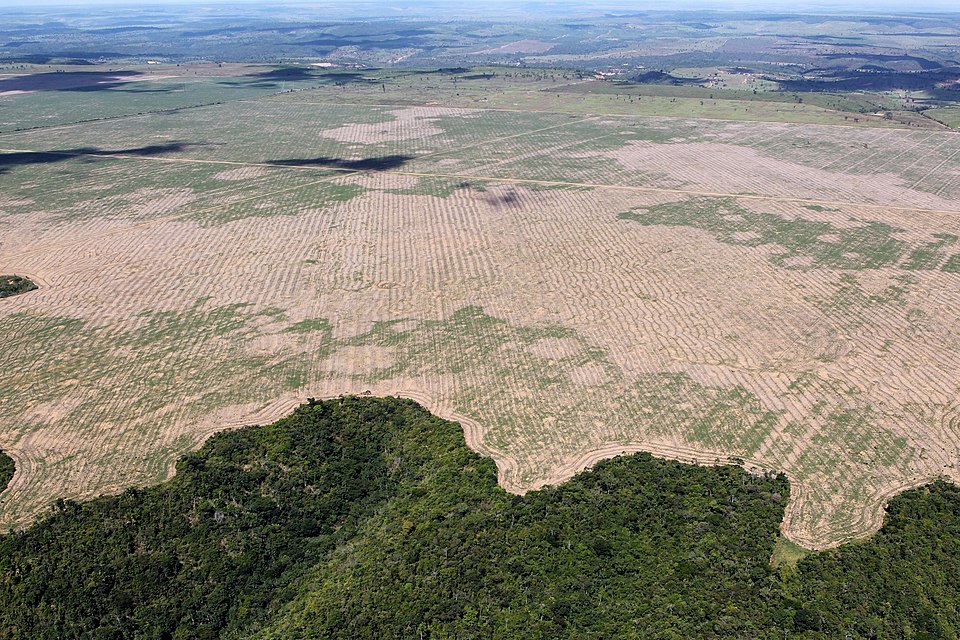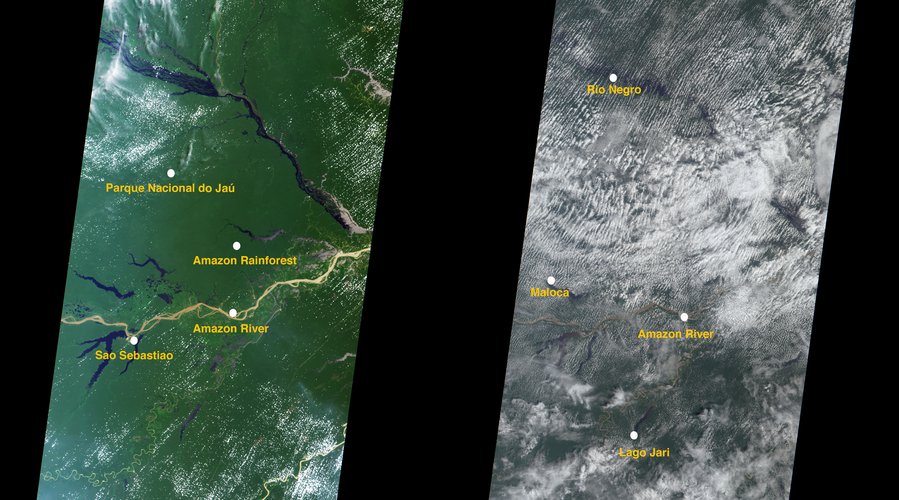Rain on the Verge of Extinction: How Deforestation Disrupts Rainfall
Deforestation is reshaping the water cycle: thinned areas receive more rain during the wet season and less during the dry season. A recent study highlights how these changes jeopardize the survival of trees.
Across an area of about 7 million square kilometers—twice the size of India plus Egypt—live roughly 10 percent of all species known to humankind. This is the Amazon rainforest, considered the largest tropical rainforest on Earth and one of the planet’s most important and fragile ecosystems.
A central element in sustaining ecosystems is the water cycle, and in the Amazon this cycle shifts with the seasons: half the year is defined as the wet season (December to May), and half as the dry season (May to December). During the wet season, forest trees absorb large quantities of water—up to 200 mm of rainfall per month—while at the height of the dry season they manage with only about 50 mm. The “fast” is long and demanding, but the trees are adapted to endure it until the welcome rains eventually arrive.
Environmental changes in the Amazon, however, disrupt the delicate interactions among water balance, wind, and the flows of heat and radiation moving between vegetation, soil, and the atmosphere. These interactions shape the local climate and therefore the region’s rain cycle. One of the most dramatic environmental changes of the past half-century is deforestation—the clearing of trees to convert forested land for other uses, most often agriculture. The pace of deforestation is unprecedented; in the Brazilian state of Rondônia, for example, about one-third of its 208,000 square kilometers of rainforest had already been cleared by the early 2000s. Deforestation has global impacts on the climate system and on the carbon cycle, but a new study published in Nature examines its influence on the Amazon’s local rain cycle, showing that this, too, carries destructive consequences.

The pace of rainforest deforestation is unprecedented. Vast areas where trees have been cleared, Brazil | Wikimedia, Ibama
Two Seasons
The researchers used maps of forest cover in the Amazon from the years 2000 and 2020, during which about 60 percent of the region experienced a decrease in tree cover—ranging from partial thinning to complete clearing. These data were used to run climate models that predicted rainfall over the same period, both with and without deforestation, allowing the team to isolate the impact of forest loss on precipitation patterns. The study focused on the wettest and driest months, enabling the models to distinguish changes at the peak of the dry season – June to August – and at the peak of the wet season – December to February. The researchers also differentiated between two mechanisms: rainfall driven by changes in local moisture and rainfall originating from regional atmospheric moisture.
The researchers observed that during the wet season, in areas where the forest has been thinned, the ground heats up more than in nearby forested areas. This heating causes air to rise and creates a low-pressure zone at ground level, drawing moist air from the forested region into the cleared area. Clouds and rain then form from moisture that is not local but atmospheric. This phenomenon increases rainfall by about 6 mm per month in deforested regions, but its effect weakens beyond 40 km from the thinned area, and in more distant regions a decrease in rainfall was observed. The effect becomes more pronounced as the extent of deforestation increases.

In the Amazon, half the year is the wet season (December to May) and half the dry season (May to December). The satellite image shows increased cloud cover during the wet season (right) | NASA/GSFC/LaRC/JPL-Caltech, MISR Team
The Dry Season Gets Even Drier
In the dry season, the air is too arid for the wet-season mechanism to play a significant role. Here, the primary impact of deforestation is a reduction in local moisture. Without trees, less water evaporates from the ground into the atmosphere, leading to a decline in rainfall of about 1.5 mm per month. The researchers found that deforestation during the dry season makes the season, quite literally, even drier. This effect is noticeable up to 1,000 kilometers away from the deforested areas and influences the entire Amazon basin region.
Overall, deforestation in the Amazon exerts opposite effects on the water cycle: it locally boosts rainfall during the wet season but reduces it during the dry season. Because trees are already under water stress in the dry season, any additional reduction in rainfall may jeopardize their survival—even in regions that have not been cleared. Meanwhile, the wet-season increase in rainfall is not necessarily beneficial, as moisture is drawn from intact forest into thinned areas, reducing the amount of rain available to the trees.
The researchers estimate that the deforestation trend will continue and that rainfall will keep declining, leading to further tree mortality. Combined with global warming, this trend may put as much as half of the vast Amazon rainforest at risk of transforming into a savanna-like landscape by 2050.
החוקרים מעריכים כי מגמת בירוא היערות תימשך, וכמות הגשם תמשיך לרדת, מה שיגרור תמותת עצים נוספת. שילוב של בירוא יערות והתחממות גלובלית עלול להביא לכך שכמחצית מהיער האדיר תעמוד בסכנה להפוך לנוף דמוי סוואנה עד שנת 2050.




